Using the right types can enhance growth, nutrient utilization, immune response and disease resistance
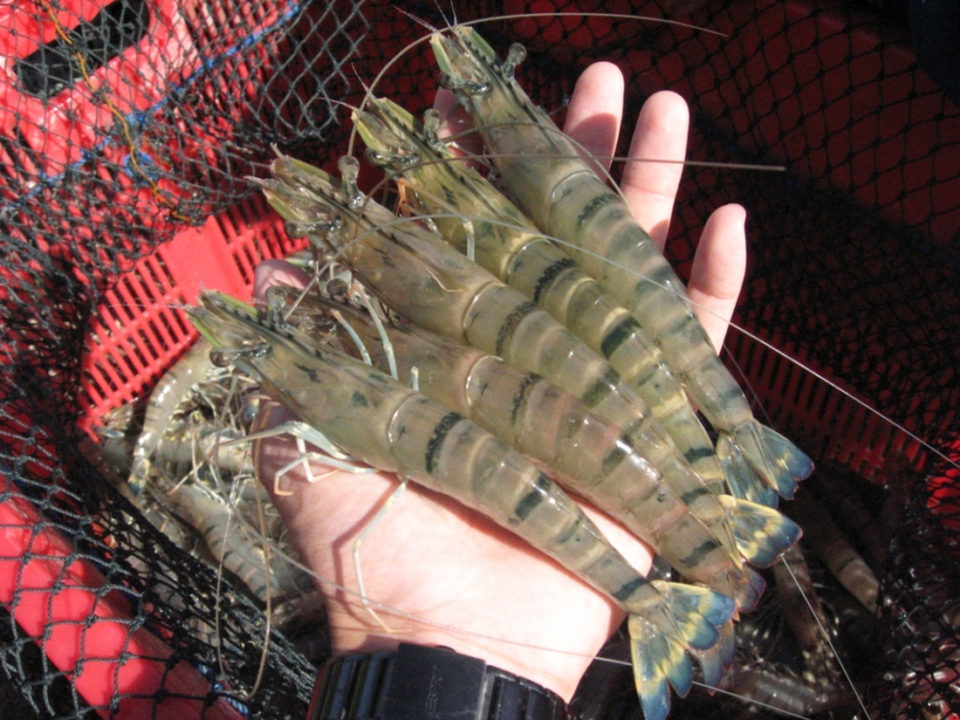
The increasing intensification of aquaculture practices has given rise to frequent incidences of disease outbreaks and causes major economic losses to farmers. Significant amounts of antibiotics are often used in the aquaculture industry, especially in Asia, to prevent and/or control infectious diseases caused by bacterial pathogens, following the discovery of the growth promoting and disease fighting capabilities of antibiotics.
The extensive use of a wide variety of antibiotics in the aquaculture industry, both as therapeutic and growth-promoting agents, has increased the potential harmful effects on human and animal health as well as the aquatic environment. The emergence of antibiotic resistance in various bacterial pathogens associated with fish disease has been well documented.
This use of antibiotics in aquaculture has the potential to threaten public health due to antibiotic residue bioaccumulation, and researchers have cautioned against the excessive use of antibiotics in aquaculture farms for short-term economic gains. Public awareness regarding the prophylactic use of antibiotics in animal feeds has led to their ban in animal feed formulations.
A worldwide effort to minimize and eventually eliminate the use of antibiotics for growth promoting purposes in the aquaculture and livestock industry started with the ban on the use of sub-therapeutic antibiotics in the European Union in January 2006. The development of effective non-antibiotic compounds as an alternative to the prophylactic use of antibiotics to control infectious diseases and enhance growth performance is therefore paramount for the continued expansion of the global aquaculture industry.
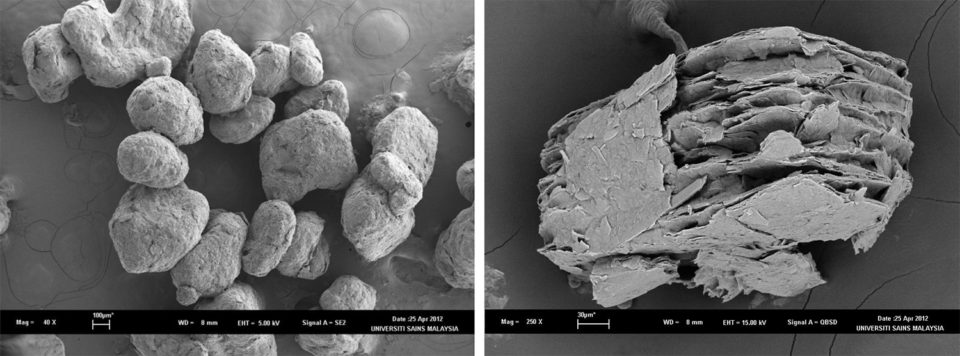
What are organic acids?
Organic acids are organic compounds with one or more carboxyl groups. These include saturated straight-chain monocarboxylic acids (C1-C18) and their respective derivatives, such as unsaturated (cinnamic, sorbic), hydroxylic (citric, lactic), phenolic (benzoic, cinnamic, salicylic) and multicarboxylic (azelaic, citric, succinic) acids with a general molecular structure of R-COOH, where R represents the monovalent functional group. These acids are commonly referred to as short-chain fatty acids, volatile fatty acids or weak carboxylic acids.
Organic acids are produced through the microbial fermentation of carbohydrates by various bacterial species under different metabolic pathways and conditions. Some lower molecular weight organic acids, for example, acetic, propionic and butyric acids are also formed within the large intestine of humans and animals at high concentrations by anaerobic microbial communities. Many of the short-chain organic acids (C1-C7) are naturally present as normal constituents of plants or animal tissues. However, most organic acids commercially used in the food and feed industry are produced synthetically. Organic acids may also form into single or double salts of their acid through combining with potassium (K), sodium (Na), calcium (Ca), etc.
Weak lipophilic organic acids and their salts are considered as “generally regarded as safe” (GRAS) substances and have been used for centuries as preservatives in foods and beverages. They are listed in the EU regulations as permissible feed additives in food animal production. Organic acids, their salts or combinations thereof, have been successfully used in livestock feeds as alternatives to antibiotics. Although the use of dietary organic acids and their salts have been extensively studied in various terrestrial animals, the research on aquatic animals has only intensified in the last 10 years.
Organic acids in fish and shrimp feeds
As far as we know, only a few studies had been published on the use of organic acids in aquafeeds prior to the ban of antibiotic growth promoters use in livestock production. Since 2006, many studies have been conducted to determine the effects of dietary organic acids and their salts on growth performance, nutrient utilization and disease resistance in several commercially important farmed fish species, such as rainbow trout, salmon, carp and tilapia. In the last five years, this research has been extended to shellfish. For a comprehensive overview of the major organic acids and their salts tested in aquafeeds to date and their major impacts in fish and shrimp, refer to the review paper by Ng and Koh (2017), Reviews in Aquaculture 9: 342-368.
Citric acid or its salts are by far the most investigated organic acid in aquaculture. Numerous studies have reported that citric acid can improve growth, feed utilization and mineral availability, particularly phosphorus in various fish species such as rainbow trout, red sea bream, rohu, beluga sturgeon and yellowtail, while some reported contradictory findings. In general, dietary supplementation of citric acid to plant protein based-diets is very effective in improving the growth performance and retention/ availability of minerals, particularly phosphorous. Citric acid-supplemented feeds will therefore contribute to the formulation of eco-friendlier aquafeeds. A more recent study on the Pacific white shrimp (Litopenaeus vannamei) indicated that other than enhancing the nutritional value of feeds, citric acid may also have a functional role in enhancing shrimp survival, immune response and resistance to Vibriosis.
We have previously demonstrated that dietary salts of formic acid such as potassium diformate could positively impact growth, feed utilization efficiency and nutrient digestibility of red hybrid tilapia. Other researchers with various fish species have similarly reported beneficial results while others have reported a lack of positive impact on the use of formic acid and/or its salt. These inconsistent findings are probably due to differences in the concentrations of organic acids, animal species, diet composition as well as the culture conditions used. Pacific white shrimp fed formic acid-supplemented diets have been reported to show enhanced resistance to Vibrio parahaemolyticus challenge.
Similar to studies reported for citric and formic acids or their salts, studies with lactic acid/salt also showed the importance of using the correct type and dietary concentration of organic acid for different fish species. No beneficial effects or even detrimental effects on fish growth and/or physiology can occur if the wrong type and/or dosage of organic acids are used. In a recent study, when supplemented at graded levels of dietary lactic acid from 0 to 16 g/kg, we did not observe any further improvement in growth performance above 2 g/kg in the feeds of the freshwater prawn (Macrobrachium rosenbergii). Considering the multitude of farmed aquatic animals, much more research is required to further elucidate this basic tenet of organic acid supplementation in aquafeeds.
Research on sodium-butyrate have found that this organic acid salt altered the intestinal microbiota of catfish and shrimp and led to some potentially beneficial changes in intestinal metabolites in sea bream. Dietary butyrate was shown to spare the oxidation of some amino acids and increased their bioavailability into arterial circulation, resulting in enhanced absorption of certain essential amino acids in the fish gut. Dietary butyrate also significantly increased the concentration of some nucleotide derivatives in the fish gut.
Information on the use of other organic acids and/or their salts such as malic, succinic, acetic, propionic and fumaric acid as less available and further research are needed on its impact in farmed aquatic animals.
Each organic acid has its own spectrum of antimicrobial activity due to their specific physical and chemical properties. Therefore, the advantage of using organic acids blend (OAB) in animal feeds is that the OAB can have a broader spectrum of antimicrobial activity against a wider range of disease-causing bacteria and with potential synergistic effects on growth performance and nutrient utilization. Moreover, OAB may allow further reduction of the dose used in animal feeds thereby reducing costs. OAB constitute a potential strategy to overcome the inconsistency of findings on the use of single organic acids in the feeds of various aquatic animals. Commercial and prototype OAB are usually proprietary formulations of the suppliers and researchers, respectively.
We recently evaluated a prototype OAB and observed that it improved feed utilization, nutrient digestibility and reduce total cultivable bacterial counts in the feces and gut of tilapia in a dose-dependent manner. Furthermore, cumulative mortality of 16 days post challenge with Streptococcus agalactiae was lower in fish fed OAB-supplemented diets. When raised from fingerlings to near market size, we observed that hybrid tilapia fed diets supplemented with the prototype OAB at 5 or 10 g/kg tended to have improved growth and feeding efficiency while those fed the 10 g/kg OAB diet had significantly enhanced phosphorous, dry matter and ash utilization over tilapia fed the control diet. No significant growth differences were detected between tilapia fed the oxytetracycline (OTC) or OAB-added diets. Moreover, the prophylactic effects of the 5 g/kg OAB or 5 g/kg OTC diets in tilapia subsequently challenged with S. agalactiae were similar and led to significantly enhanced disease protection than fish fed the control diet. A field trial of the prototype OAB in a commercial Nile tilapia farm reported significantly reduced antibiotic use by the tilapia farmer. Other researchers have reported similar encouraging results with the use of various prototype and commercial OAB in the feeds of various fish and shrimp species.
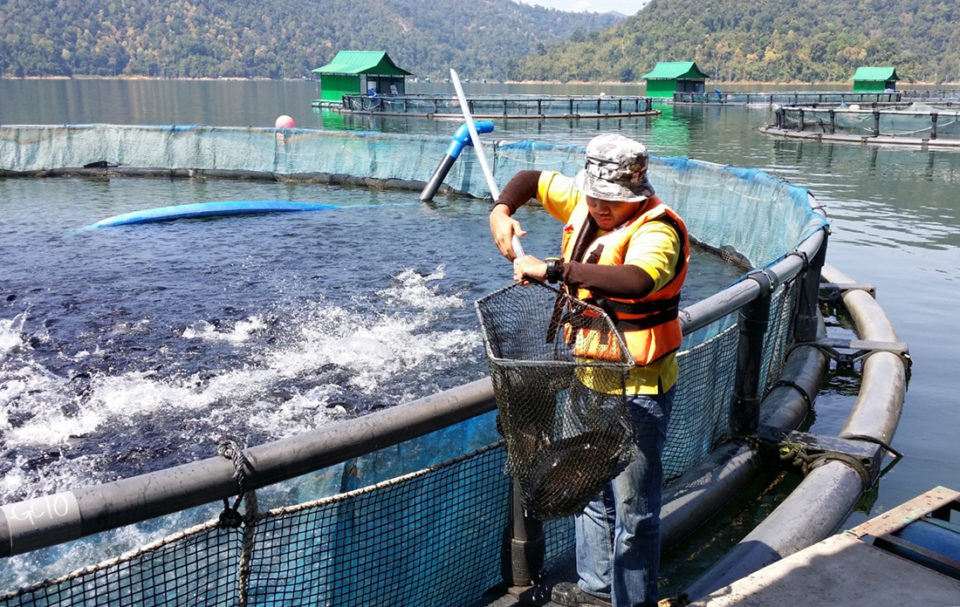
Conclusion and perspectives
There is currently great interest in the commercial use of organic acids in aquafeeds, both to enhance growth performance and to control disease. As evident from research reviewed, many studies have reported that organic acids, their salts or mixtures thereof can improve growth, feed utilization, gut health and disease resistance in aquatic animals. Nevertheless, despite the reported improvement in nutrient availability of organic acid-supplemented diets in most studies, contradictory results have been reported for the growth-promoting effects, which seem to depend on the aquatic animal species and/or type and dosage of organic acids tested. The reduction in phosphorous and nitrogen excretion due to improved mineral utilization as a result of diet acidification will greatly promote the formulation of more environmentally friendly aquafeeds. The reduction in the microbial load of excreted fecal matter from farmed fish fed organic acid-supplemented feeds will benefit the farming of fish in water reservoirs and closed re-circulating water culture systems.
Increasingly, scientific evidence is being accumulated as to the positive effects of dietary organic acids on the health of farmed fish and shrimp, imparting to them increased resistance to pathogenic diseases that is commonly encountered in most modern aquaculture nowadays. However, unlike terrestrial livestock where a limited number of improved strains are currently being farmed, aquaculture constitutes a multitude of combinations of farmed species, feeding practices and culture systems.
This means that research results on the success or failure in the use of organic acids in one study might not be applicable to other species of aquatic animals cultured under different conditions. Based on research conducted so far, organic acids appear to be a promising candidate to replace AGP in aquaculture. More research is needed to fully understand the mechanism of action of dietary organic acids on the growth and health promoting benefits to cultured aquatic animals for the continued and sustained growth of the global aquaculture industry.
It is anticipated that the use of dietary organic acids as functional feed additives in aquafeeds will increase markedly in the foreseeable future. The continuous expansion of the global aquaculture industry constitutes a sizable market potential. The intensification of aquaculture systems coupled with global warming is likely to increase the incidence of disease outbreaks. For example, the recent outbreak of AHPNS/EMS that has been traced to Vibrio bacteria as the causative agent has decimated many shrimp farms around the world with farmers suffering huge economic losses.
The increasingly compelling evidence linking the development of antibiotic resistance genes in bacteria of aquatic origins to animal and human pathogens has already prompted many governmental and non-governmental agencies to issue bans and/or restrictions on the use of antibiotics as growth promoters in many countries. The issue now is one of education and enforcement, especially in many developing nations where a significant amount of aquaculture production still comes from small scale farmers who may be unaware of the dangers posed by the excessive use and misuse of antibiotics.
For larger-scale producers, other than efficacy, the use of antibiotic alternatives such as organic acids will also come down to costing. The cost of dietary organic acids depends on the type of product and the country where they are sold, due to transport and taxes. Currently, organic acids are recommended to be added at 1.5 to 5.0 kg per metric ton of aquafeed by various feed additives companies. Convincing farmers and aquafeed manufacturers as to the actual benefits of organic acid supplementation is crucial and this can only be done through scientifically proven laboratory and field-based research data.
Through decades of research and development, the use of dietary organic acids in the feeds and drinking water of terrestrial livestock such as swine and poultry is now considered standard animal husbandry management practice. The efficacy and cost-effectiveness of dietary organic acids to livestock farmers are well established. Due to the sheer number of aquatic animal species being farmed and under various culture conditions, the path to establishing dietary organic acids as part of a standard disease management program in any aquaculture farm is anticipated to be a long one but crucial.
Authors
-

Wing-Keong Ng, Ph.D.
Professor
Fish Nutrition Laboratory, School of Biological Sciences
Universiti Sains Malaysia
Penang 11800, Malaysia[121,109,46,109,115,117,64,103,110,107,119]
-

Chik-Boon Koh, Ph.D.
Fish Nutrition Laboratory, School of Biological Sciences
Universiti Sains Malaysia
Penang 11800, Malaysia
Tagged With
Related Posts
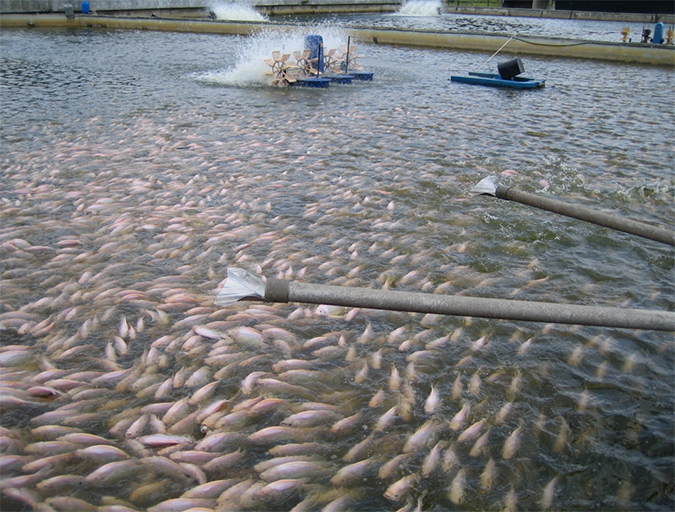
Health & Welfare
Dietary organic acids used as growth promoters, anti-microbials
A feeding trial measured growth, nutrient utilization and faecal/gut bacterial counts in triplicate groups of red hybrid tilapia (Oreochromis sp.). Study results show that dietary organic acids can potentially replace OTC as a growth promoter and anti-microbial in tilapia feeds.
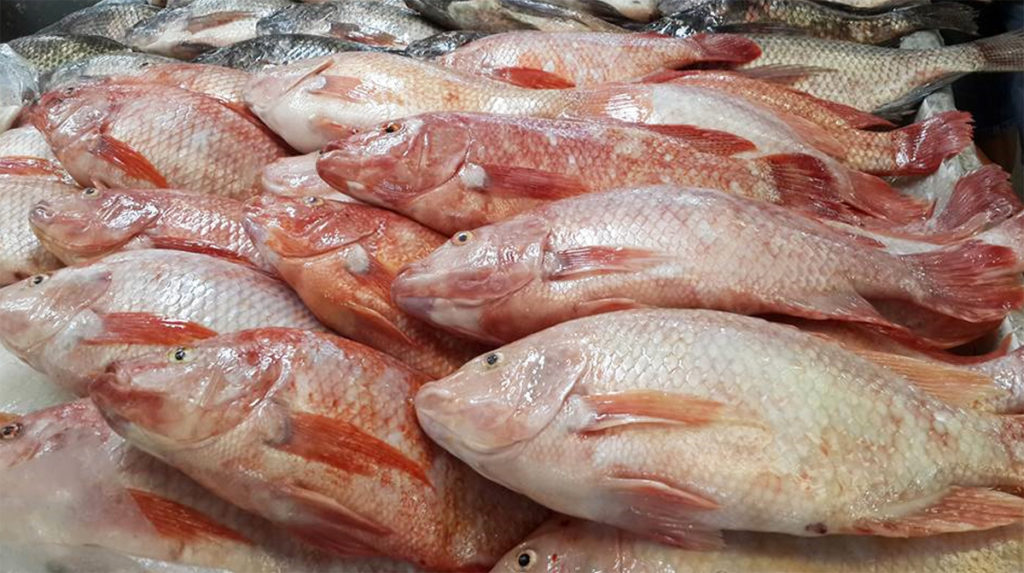
Health & Welfare
Evaluating effects of organic acids in Nile tilapia feed
A study tested the effects of a commercial product that includes three organic acids incorporated into a commercial feed for Nile tilapia fingerlings.
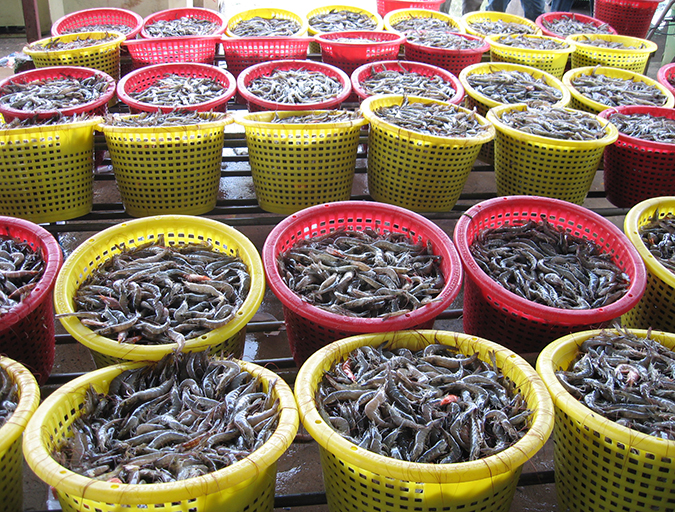
Aquafeeds
Microencapsulated organic acids aid shrimp culture
A novel blend of organic acids (OAB) microencapsulated in a lipid matrix and supplemented in the diets of Litopenaeus vannamei enhanced their growth, phosphorus utilization, resistance to Vibrio harveyi and immunity. This may have implications as an eco-friendly prophylactic strategy.

Aquafeeds
A look at protease enzymes in crustacean nutrition
Food digestion involves digestive enzymes to break down polymeric macromolecules and facilitate nutrient absorption. Enzyme supplementation in aquafeeds is a major alternative to improve feed quality and nutrient digestibility, gut health, compensate digestive enzymes when needed, and may also improve immune responses.

